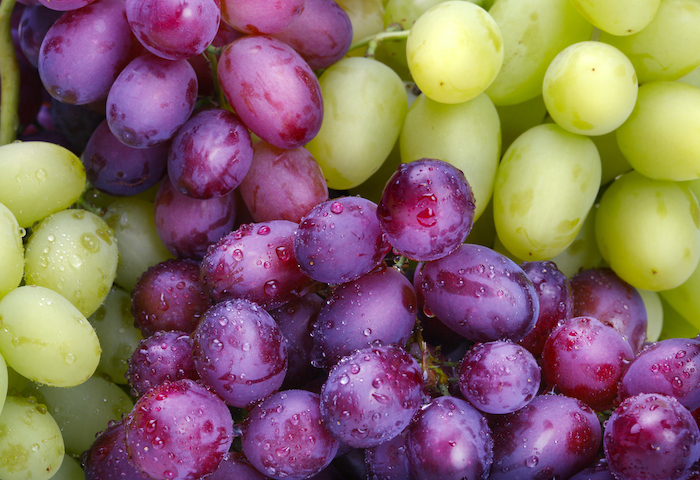Agronometrics in Charts: Chilean grape exports reaping the benefits of varietal replacement

In this installment of the ‘Agronometrics In Charts’ series, Sarah Ilyas studies the state of the Chilean grape season. Each week the series looks at a different horticultural commodity, focusing on a specific origin or topic visualizing the market factors that are driving change.
The ASOEX (Chilean Fruit Exporters Association) Table Grape Committee has issued its fourth export prediction for the 2022/23 season. It represents an increase of 1.2% over the previous estimate, with exports projected at 555,483 tons, or 67,742 million (8.2kg) boxes. Although marginally higher than the projection from December, the current forecast indicates a decline of 8.9% from 2021/22. This is mostly due to varietal replacement within the Chilean table grape sector.
This year will mark a significant milestone. For the first time, more than half of the exported volume will comprise of novel varieties, making up 53% of the total. North America will continue to be the main destination for Chilean grapes, taking around 37.2 million boxes, followed by Asia with almost 14 million boxes and Europe with 9 million boxes.
 Source: USDA Market News via Agronometrics.
Source: USDA Market News via Agronometrics.
(Agronometrics users can view this chart with live updates here)
According to Ignacio Caballero, marketing director of ASOEX, production volume, harvestable volume, weather conditions, shipping costs and labor force availability will be the determining factors for the season, he also stated that new varieties will account for almost 37 million boxes, while traditional varieties, including Red Globe, will make up around 31 million boxes this season. “More than 50 per cent of grape exports will consist of new varieties, especially in white and red grapes. The new white varieties will exceed 13 million boxes, black varieties 4 million boxes and red varieties 18 million,” he said.
Nicolas Damm of Rio Blanco notes that freight costs and the costs at the destination are really affecting the final results for the grower. Though hopefully, the logistics picture will be better for Chile this season. The grape association has worked with the Chilean ports to improve their operations and efficiency. “Shipping companies are working closely with the ports in the U.S. for logistics to be better,” he said.
 Source: USDA Market News via Agronometrics.
Source: USDA Market News via Agronometrics.
(Agronometrics users can view this chart with live updates here)
Fumigation is still a big bottleneck, Damm adds. In late December, The U.S. Department of Agriculture’s Animal and Plant Health Inspection Service (APHIS) extended the comment period on a pest risk assessment and a commodity import evaluation document describing the circumstances under which Chilean table grapes may be imported into the United States. APHIS will evaluate any feedback submitted by January 17, 2023.
Currently, table grapes from Chile must be fumigated with methyl bromide to mitigate for the Chilean false red mite, Brevipalpus chilensis, and the European Grapevine Moth, Lobesia botrana. APHIS is proposing that table grapes from areas in which the moth is either absent or at very low prevalence could be imported into the United States under a systems approach or irradiation.The systems approach would provide an alternative to the current import requirement of mandatory treatment with methyl bromide fumigation.
This arrangement should not have an effect on the quantity of Chilean grapes sent to the United States, but it will have a beneficial effect on the quality of the product that will be available on the market, and it will also provide an environmentally friendly and sustainable alternative. In addition to the positive impact on the U.S. supply chain and customers, the fact that Chile and the U.S. are in counter-season has another consequence: local American producers will be able to begin their table grape season with a steady demand throughout the year.
Damm stresses that this season is a particularly important one for Chilean grapes. “We have to show the U.S. market a good product so we don’t keep losing ground to Peru in the early part and Mexico in the late part. And to keep the high regard of Chilean grapes. We have to gain back ground on the quality that was lost last season due to external factors. Chilean exporters and growers have to be really careful on what they grow and what they export,” he adds.
In our ‘In Charts’ series, we work to tell some of the stories that are moving the industry. Feel free to take a look at the other articles by clicking here.
All pricing for domestic US produce represents the spot market at Shipping Point (i.e. packing house/climate controlled warehouse, etc.). For imported fruit, the pricing data represents the spot market at Port of Entry.
You can keep track of the markets daily through Agronometrics, a data visualization tool built to help the industry make sense of the huge amounts of data that professionals need to access to make informed decisions. If you found the information and the charts from this article useful, feel free to visit us at www.agronometrics.com where you can easily access these same graphs, or explore the other 21 commodities we currently track.














































